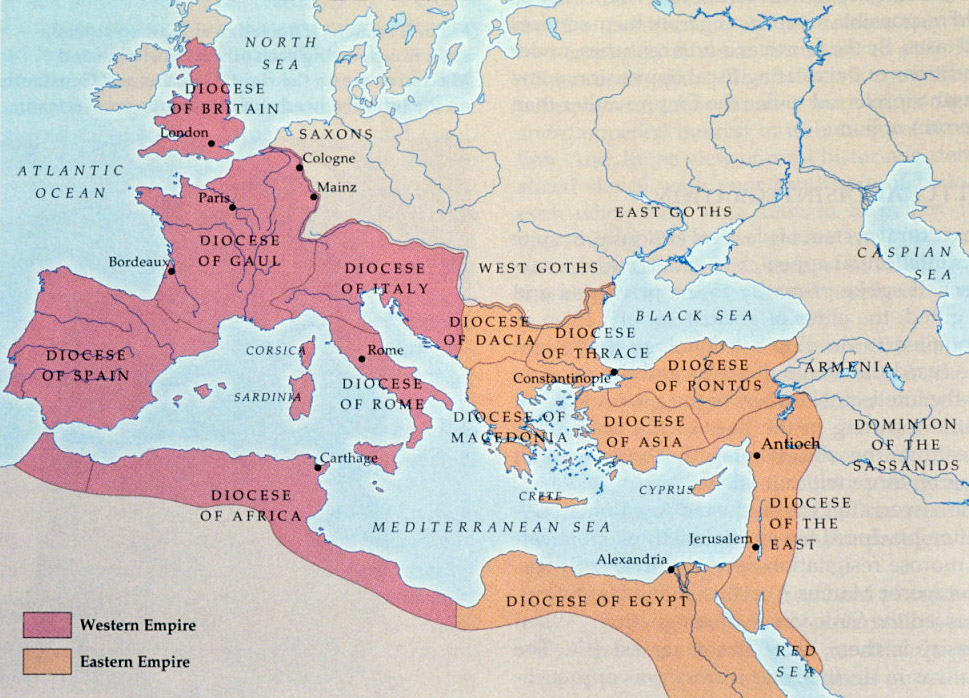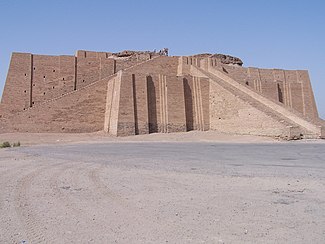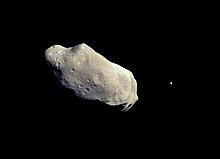The Kingdom of Rome and the Antichrist, the Fourth Kingdom [Print Document]
(Note: For opening links, I recommend you right click on links, and then select "Open link in new tab". If you just click on the link with the left mouse button, it will take you to away from this site. All these links open to safe websites, such as Wikipedia.org and Archive.org.)
The Roman Empire was the most powerful empire of the ancient empires. It controlled vast amounts of territory around the Mediterranean Sea. Its roads, many buildings, and aqueducts still exist today, revealing how well-designed they were. But, Rome's legacy never ended. In this article, we will show how Rome never truly ceased to exist as a powerful, multicultural, and geopolitical empire.
We will show how the Roman Empire is alive and well in a form that one may not expect.
Daniel 7:7-8
“[7] After this I saw in the night visions, and behold a fourth beast, dreadful and terrible, and strong exceedingly; and it had great iron teeth: it devoured and brake in pieces, and stamped the residue with the feet of it: and it was diverse from all the beasts that were before it; and it had ten horns. [8] I considered the horns, and, behold, there came up among them another little horn, before whom there were three of the first horns plucked up by the roots: and, behold, in this horn were eyes like the eyes of man, and a mouth speaking great things.”
The kingdom or Empire to succeed the Greek kingdoms was Rome. After years of fighting on and off with Greece, Rome was able to conquer the Greek city-states, which were not always friendly with each other. Rome spread its control around the Mediterranean Sea and all the way up to Britain. But, the European tribes did not like their conquerors. Later, when Rome was weakened and slowly collapsing, disgruntled Germanic tribes (Goths and others) attacked Italy. The western Roman empire eventually was divided up into small countries or regions controlled by Germanic tribes, including the Franks, Goths, Visigoths, Vandals, and others. But, many of these tribes adopted some of the culture and customs of the Romans.
Diocletian Divides the Empire
_-_Foto_G._Dall'Orto_28-5-2006.jpg/440px-Istanbul_-_Museo_archeol._-_Diocleziano_(284-305_d.C.)_-_Foto_G._Dall'Orto_28-5-2006.jpg) |
| (Diocletian divided the empire.) |
A couple centuries earlier, when the empire became somewhat weakened and it could not effectively control its vast territories, the emperor Diocletian divided it in two (in 284-285 A.D.), fulfilling the prophecy in Daniel 2. In Daniel 2, King Nebuchadnezzar has a dream about a statue, symbolizing major empires that existed through history during Daniel’s time and afterward. It reveals that the Roman Empire, the legs of iron, would be divided into two realms. These are represented by the two legs of the statue in Nebuchadnezzar’s dream.
 Daniel 2:33 says: “His legs of iron, his feet part of iron and part of clay.”
Daniel 2:33 says: “His legs of iron, his feet part of iron and part of clay.”
Daniel 2:40 says: “And the fourth kingdom shall be strong as iron: forasmuch as iron breaketh in pieces and subdueth all things: and as iron that breaketh all these, shall it break in pieces and bruise.”
After Diocletian divided the empire, the western Roman empire continued to struggle with moral, economic, and social issues, and its administrative power eventually collapsed under the weight of its own corruption. The Apennine Peninsula was captured by Germanic tribes who divided up the land into weak kingdoms. However, Charlemagne, the king of the Franks, became the first “Holy Roman Emperor.” Pope Leo III announced, in 800 A.D., that Charlemagne was the Western Roman Emperor or the Emperor of the Romans. So, in actuality, Rome did not end at this time. Its administrative grip over the land was transferred to the political and religious influence of the Roman Catholic Church, and to the weak Holy Roman Empire.
 |
| (A map of a divided Roman Empire) |
Rome Continues to Exist
Meanwhile, the eastern Roman empire, called the Byzantine Empire, lasted for centuries until it was conquered by the Ottoman Turks. During this time, while the Holy Roman Empire existed, the main power in Europe was the influential power of the Catholic Church, which influenced the way people lived and the politics of their countries. This organization claimed to get its origin from the 12 apostles, whom Jesus Christ appointed. But, its origin is found in the religions of Egypt and Greece, which got their beliefs from Babylon thousands of years ago, around the time that all the tribes of the world were located in the Middle East when it was more fertile. (Note: I write this article not to attack Catholics but because I care about them, and want to point out some historical facts to challenge readers. I present this information to encourage readers to think for themselves about this subject, and to seek God about it.)
 |
| (A ziggurat) |
In Genesis 11, the Bible tells us how Nimrod and the people in his area built a city and a great tower. This tower of Babel was being constructed by people who all spoke the same language. But, when God saw how they wanted to corrupt themselves with idolatry and with a desire to become like God, He changed their languages so that they spoke different languages. These languages are the parent languages of the modern ones that exist today.
The Egyptians brought from that early culture ideas about a goddess with a child that they worshiped as Isis and Horus. In the Middle East many people of different ethnic groups worshiped Ashtoreth (or Astarte, Ishtar), a goddess of “love,” fertility, the moon, and other attributes, including being the supposed “mother” or “creatress” of mankind (Reference “Ashtoreth”). She was worshiped in connection with Baal.
The Catholic Church took the concept of a motherly goddess and paired that concept with a child god to form their version of Mary with her son. This baby is by no means Jesus. This baby would be the son of the goddess, which pagans from many cultures would be familiar with.
The pagan Romans did not actually worship a mother goddess with her child in the exact way that Catholics do, but the Egyptians did, and the Greeks had the concept of a powerful mother goddess from ancient times. Long before the cult of Zeus was accepted by ancient Greeks, they worshiped a goddess called Hera (Sidwell), a so-called “great goddess,” or a “mother goddess.” Much later, when they adopted the cult of Zeus, the Greeks made Hera into a wife of Zeus, and no longer worshiped her as a great “mother goddess.”
An article by Robert T. Sidwell details how Hera was worshiped as a powerful goddess before the cult of Zeus emerged in Greece. He wrote:
“Hera, however, was originally connected to an older matrifocal world far more ancient than the cult of Zeus in Greece-a world in which she held a powerful and important status in her own right.” [End quote] (Sidwell).
Early Catholics adopted the concept of a mother goddess for their religion by taking pagan teachings from other religions and bringing them together into many of the doctrines of the Catholic Church. They modified the scriptures or twisted them to suit their pagan beliefs. For instance, Catholics often pray to a statue or a picture of Mary with a halo over her head. The halo can be found in pre-Christian artwork, such as a Roman floor mosaic of Apollo with a halo about his head (right). There are many examples of halos found on ancient vases prior to the time of Catholicism.
Pagan festivals and gods were assigned different names and incorporated into the Catholic Church. Easter is an example. Nowhere in the Bible does it teach that Christians should keep Easter. The Easter egg is not found in the Bible. It comes from pagan festivals. The Encyclopedia Britannica (1991) mentioned that: “...folk customs have collected, many of which have been handed down from the ancient ceremonial…symbolism of European and Middle Eastern pagan spring festivals…for example, eggs…have been very prominent as symbols of new life and resurrection”[.]
The Catholic Church Is the Incarnation
of Its Predecessor, the Roman Empire.






_-_Foto_G._Dall'Orto_28-5-2006.jpg/440px-Istanbul_-_Museo_archeol._-_Diocleziano_(284-305_d.C.)_-_Foto_G._Dall'Orto_28-5-2006.jpg)





